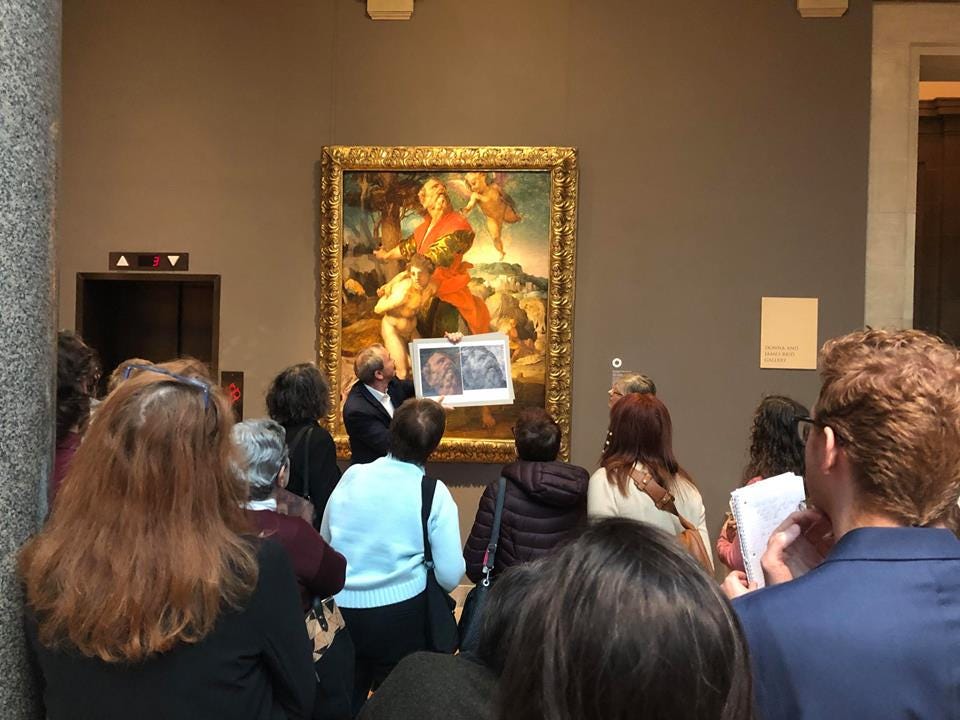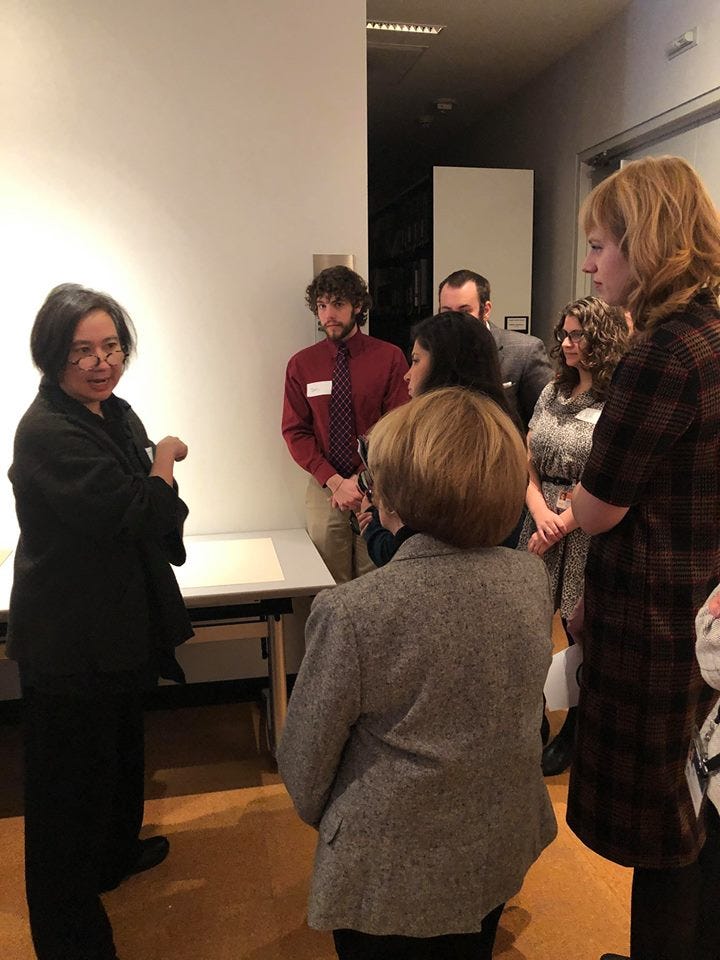Behind the Scenes: Master/Apprentice: Imitation and Inspiration in the Renaissance
- Blog Post
- Exhibitions

Michelangelo’s sculptures, paintings, and architectural projects have been the subject of artistic admiration for more than 500 years. As a companion to Michelangelo: Mind of the Master, on view in the Kelvin and Eleanor Smith Foundation Exhibition Hall through January 5, 2020, Master/Apprentice: Imitation and Inspiration in the Renaissance surveys the impact of Michelangelo — his practice, his projects, and his biography — on artists working in the Renaissance and beyond. This exhibition was organized in collaboration with graduate students in the course “After Michelangelo,” taught by Dr. Emily Peters, curator of prints and drawings at the CMA, and associate professor Erin Benay in the CMA-CWRU Joint Program in Art History and Museum Studies. Learn about this collaboration from Dr. Erin Benay in the essay below.

When Giorgio Vasari published Lives of the Artists in 1550, he announced that “the man who wins the palm among artists both living and dead, who transcends and surpasses them all, is the divine Michelangelo Buonarroti, who reigns supreme.” Indeed, Michelangelo figured as a transcendent protagonist in numerous publications of the 1500s. In reality, however, Michelangelo contributed to the creation of a mythology that was anything but beatific: he was aloof, argumentative, and conceited. If anything, his negativity only contributed to his appeal and led to the invention of a new stylistic term — terribilità, approximately translated as awe-inducing, emotional intensity — to describe his work. Michelangelo was regarded as a genius during his lifetime and the rhetoric around his biography and art has shaped modern-day stereotypes of the tormented, brilliant artist. During the 1500s and 1600s, other artists attempted to assimilate his legacy and struggled to define “originality” in the aftermath of a period of tremendous artistic production populated by intimidating artistic stars.

As a result, it was easy to imagine a graduate seminar that would take this struggle as a point of departure. After several meetings in the summer of 2018, Emily Peters (the CMA’s curator of prints and drawings) and I decided to design a collections seminar for CWRU’s art history graduate students that would take advantage of several coinciding opportunities: the major exhibition of Michelangelo’s drawings from the Teylers Museum along with the CMA’s impressive body of works on paper clearly relating in many ways to the master’s artistic production. Our plan was to teach a course in the CMA-CWRU graduate program that would ultimately result in a companion exhibition to Michelangelo: Mind of the Master.



The title of the course we taught together in fall 2018 was “After Michelangelo,” and was inspired by Marcia B. Hall’s seminal book, After Raphael (Cambridge University Press, 2001). It is a book that largely considers what happened to artistic theory and practice in the aftermath of Raphael’s untimely death at the age of 37 in 1520. For Hall this was not just a way of chronologically framing her study, it was a way to argue for the relevance of Raphael’s art in a theoretical revolution that occurred in the second half of the 1500s in Renaissance Italy. Rather than articulate this revolution as a crisis — as had been done in the past — Hall rethought what it meant to “follow,” or to “come after.” Our class took up a similar charge: instead of thinking solely of Michelangelo’s influence, we parsed out what caused other artists, for several centuries, to refer to, appropriate from, quote, copy, emulate, misunderstand, and reject the art of Michelangelo.

Dr. Peters and I worked together with our students to think through these theoretical concerns, to create a checklist for the exhibition, to write labels for each artwork, and ultimately to communicate to a diverse audience what it means to imitate or be inspired by another person. Opening October 13, the resulting exhibition is the product of an unusual amount of rigorous class discussion, innumerable drafts of exhibition labels, and the extraordinary possibilities afforded by the CMA-CWRU joint program. Like the magisterial exhibition of Michelangelo drawings now on view at the CMA, we hope that Master/Apprentice: Imitation and Inspiration in the Renaissance provides visitors with a unique view of Michelangelo’s enduring genius, as well as provoke questions about copying, authenticity, and originality in the modern age.

Master/Apprentice: Imitation and Inspiration in the Renaissance opens Sun, 10/13 and runs through Sun, 2/23. Don’t miss this exhibition, and the companion show, Michelangelo: Mind of the Master, on view NOW.